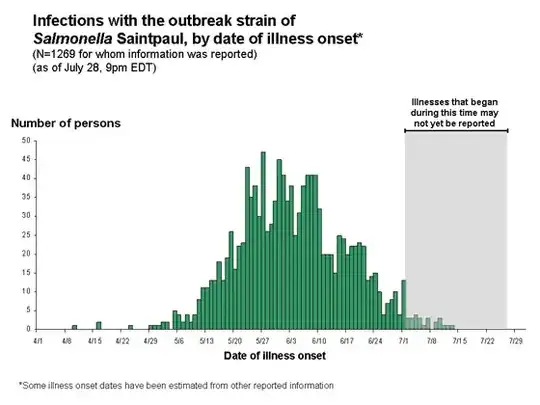Consider an epidemic curve like the one below, or any other count-based time series data:

If, as it turns out from digging into the records, retrospective data collection, or just a series of case reports that got sent via carrier pigeon rather than FedEx, that there are a group of cases that we know appear somewhere in this timeline, but not where in this timeline, is it possible to use multiple imputation, or some other probabilistic technique, to insert them into the time series?